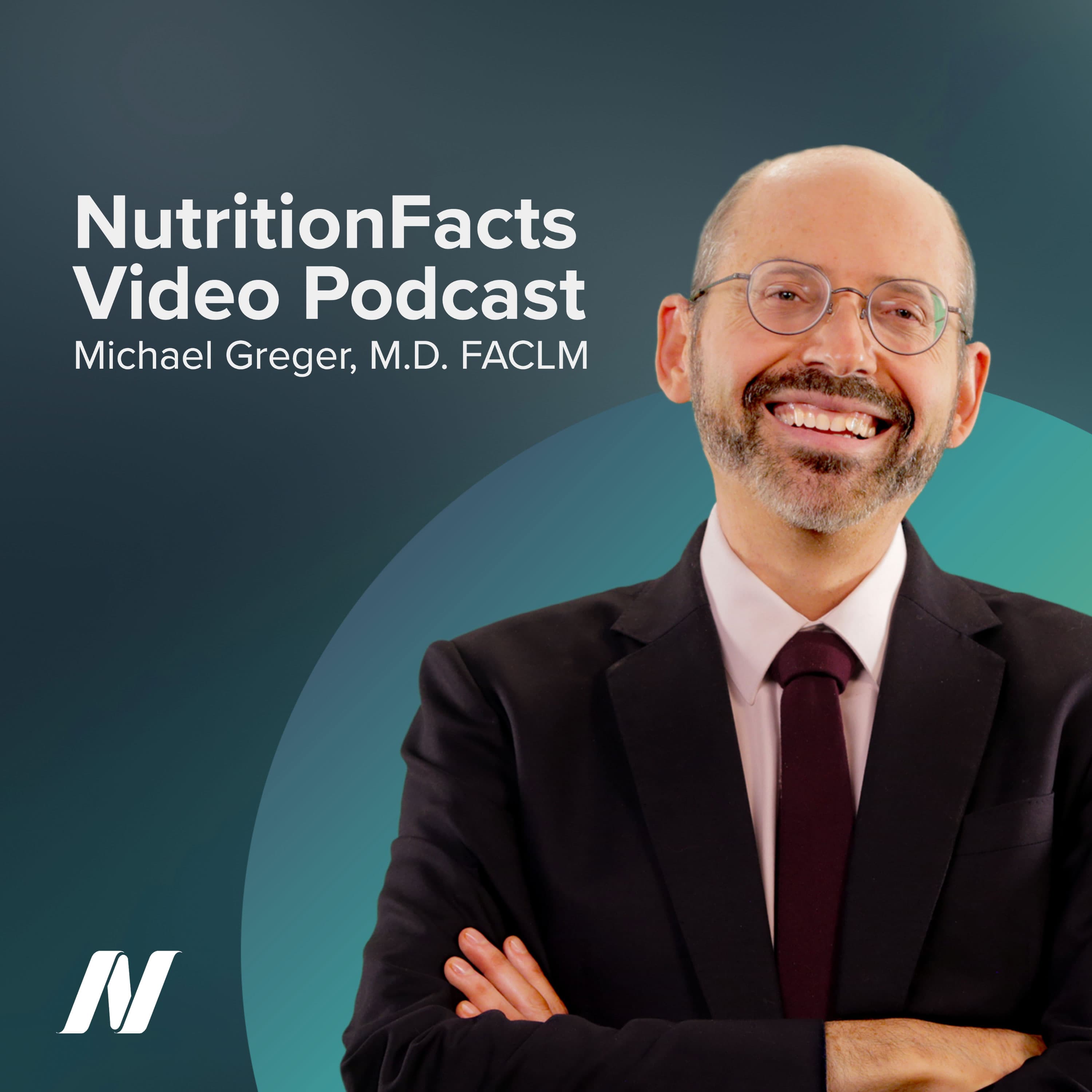The spice saffron was compared to donepezil (Aricept), a leading drug treatment for slowing the progression of Alzheimer’s disease cognitive impairment.
Saffron vs. Aricept
Below is an approximation of this video’s audio content. To see any graphs, charts, graphics, images, and quotes to which Dr. Greger may be referring, watch the above video.
The spice saffron beat out placebo in this randomized double-blind study. But Alzheimer’s patients aren’t on sugar pills; they’re on drugs like donepezil, sold as Aricept. If some drug company wanted to release a new drug, they’d have to compare it not to placebo, but to the current leading treatment—and why should it be any different with flowers? “A 22-week, multicenter, randomized, double-blind controlled trial of [saffron] in the treatment of mild-to-moderate Alzheimer’s disease.” Saffron versus Aricept, the leading drug.
Here are the results. In a graph of cognitive dysfunction, the circles are saffron. The triangles are the leading drug that costs about $2,000 a year, and is associated with all sorts of side effects. Can you tell the difference? Saffron worked just as well as Aricept—which is to say not very well at all.
But remember what untreated Alzheimer’s patients look like? They get worse. The reason drugs are prescribed is to just slow down the progression of Alzheimer’s. So, we still have a long way to go, but saffron appeared to work just as well as the leading drug, and without the side effects.
Please consider volunteering to help out on the site.
- Akhondzadeh S, Sabet MS, Harirchian MH, Togha M, Cheraghmakani H, Razeghi S, Hejazi SSh, Yousefi MH, Alimardani R, Jamshidi A, Zare F, Moradi A. Saffron in the treatment of patients with mild to moderate Alzheimer's disease: a 16-week, randomized and placebo-controlled trial. J Clin Pharm Ther. 2010 Oct;35(5):581-8.
- Akhondzadeh S, Shafiee Sabet M, Harirchian MH, Togha M, Cheraghmakani H, Razeghi S, Hejazi SS, Yousefi MH, Alimardani R, Jamshidi A, Rezazadeh SA, Yousefi A, Zare F, Moradi A, Vossoughi A. A 22-week, multicenter, randomized, double-blind controlled trial of Crocus sativus in the treatment of mild-to-moderate Alzheimer's disease. Psychopharmacology (Berl). 2010 Jan;207(4):637-43.
Below is an approximation of this video’s audio content. To see any graphs, charts, graphics, images, and quotes to which Dr. Greger may be referring, watch the above video.
The spice saffron beat out placebo in this randomized double-blind study. But Alzheimer’s patients aren’t on sugar pills; they’re on drugs like donepezil, sold as Aricept. If some drug company wanted to release a new drug, they’d have to compare it not to placebo, but to the current leading treatment—and why should it be any different with flowers? “A 22-week, multicenter, randomized, double-blind controlled trial of [saffron] in the treatment of mild-to-moderate Alzheimer’s disease.” Saffron versus Aricept, the leading drug.
Here are the results. In a graph of cognitive dysfunction, the circles are saffron. The triangles are the leading drug that costs about $2,000 a year, and is associated with all sorts of side effects. Can you tell the difference? Saffron worked just as well as Aricept—which is to say not very well at all.
But remember what untreated Alzheimer’s patients look like? They get worse. The reason drugs are prescribed is to just slow down the progression of Alzheimer’s. So, we still have a long way to go, but saffron appeared to work just as well as the leading drug, and without the side effects.
Please consider volunteering to help out on the site.
- Akhondzadeh S, Sabet MS, Harirchian MH, Togha M, Cheraghmakani H, Razeghi S, Hejazi SSh, Yousefi MH, Alimardani R, Jamshidi A, Zare F, Moradi A. Saffron in the treatment of patients with mild to moderate Alzheimer's disease: a 16-week, randomized and placebo-controlled trial. J Clin Pharm Ther. 2010 Oct;35(5):581-8.
- Akhondzadeh S, Shafiee Sabet M, Harirchian MH, Togha M, Cheraghmakani H, Razeghi S, Hejazi SS, Yousefi MH, Alimardani R, Jamshidi A, Rezazadeh SA, Yousefi A, Zare F, Moradi A, Vossoughi A. A 22-week, multicenter, randomized, double-blind controlled trial of Crocus sativus in the treatment of mild-to-moderate Alzheimer's disease. Psychopharmacology (Berl). 2010 Jan;207(4):637-43.
Republishing "Saffron vs. Aricept"
You may republish this material online or in print under our Creative Commons licence. You must attribute the article to NutritionFacts.org with a link back to our website in your republication.
If any changes are made to the original text or video, you must indicate, reasonably, what has changed about the article or video.
You may not use our material for commercial purposes.
You may not apply legal terms or technological measures that restrict others from doing anything permitted here.
If you have any questions, please Contact Us
Saffron vs. Aricept
LicenseCreative Commons Attribution-NonCommercial 4.0 International (CC BY-NC 4.0)
Content URLDoctor's Note
For more on Alzheimer’s disease, check out these videos:
Reducing Glycotoxin Intake to Prevent Alzheimer’s
Preventing Alzheimer’s with Turmeric
Treating Alzheimer’s with Turmeric
Also see my prequel video: Saffron for the Treatment of Alzheimer’s.
2017 Update: Since this video was released, I’ve done several more on saffron. See:
- Saffron for the Treatment of PMS
- Wake up & Smell the Saffron
- Saffron vs. Prozac
- Best Food for Antidepressant-Induced Sexual Function
- Saffron for Erectile Dysfunction
For additional context, also check out my associated blog posts: Natural Alzheimer’s Treatment; Alzheimer’s Disease: Up to half of cases potentially preventable; Saffron vs. Prozac for Depression; and Is Coconut Oil Bad For You?
If you haven't yet, you can subscribe to our free newsletter. With your subscription, you'll also get notifications for just-released blogs and videos. Check out our information page about our translated resources.
 Previous Video
Previous Video Next Video
Next Video